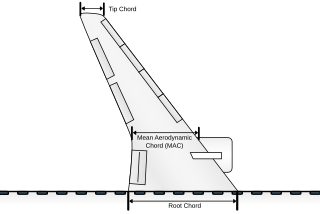The Akafleig Darmstadt D-34 sailplanes were a series of experimental single seat sailplanes, designed at the University of Darmstadt in the 1950s and early 1960s to explore the structural and aerodynamic advantages of the then emerging plastics and composite materials.

The Rubik R-25 Mokány, in English: Plucky person and sometimes known as the R-25 Standard (class), is a Hungarian single seat Standard Class glider of all-metal construction, first flown in 1960. It was one of a series of similar aircraft designed by Ernő Rubik. Only one was built.

The Győr-2 was a high performance sailplane designed and built at the Aircraft Designer and Builder Group, Aeroclub of the Rolling-stock Factory, Győr in Hungary in the early 1950s.
The IIL IS-8 was a two seat sailplane designed by Iosif Șilimon and built in Romania in 1960. They served with Romanian gliding clubs.
The IFIL-Reghin RG-5 Pescăruș or CIL Reghin RG-5 Pescăruș was a Romanian single seat sailplane built in the 1950s. Twenty six were constructed for gliding clubs.
The Schleicher K 10 is a Standard class competition glider, designed by Rudolf Kaiser and built in Germany in 1963. Only a few were produced.

The Oberlerchner Mg 19 Steinadler is an Erwin Musger designed two seat tandem trainer glider built in Austria and first flown in 1951. Several examples of this successful aircraft, which competed in the two seat class at two World Gliding Championships in the 1950s, were still flying in 2000.
The PWS-103 was a high performance, Polish 15 m span sailplane developed from the longer-span PWS-102 just before World War II.

The Rubik R-03 Szittya I was a Hungarian single-seat sailplane flown in the late 1930s. The design was developed through three improving variants. though only one of each was built.
The Jancsó-Szokolay M22 was a Hungarian single-seat sailplane first flown in 1937. Twenty were built and the type set several national records. Some remained in service up to about 1953.

The Rubik R-07a Tücsök {Cicada) and R-07b Vöcsök (Grebe) were two versions of a Hungarian primary trainer, differing most obviously in the pilot's seating. First flown in the late 1930s, about 530 were built, some remaining in service into the 1960s.

The Rubik R-12 Kevély (Proud) was a Hungarian advanced training glider. It was designed to provide safe cloud-flying experience and also raised the Hungarian height gained record several times. About fifty were built and operated between 1941 and 1951.

The Rubik R-16 Lepke (Butterfly) was a single seat seat Hungarian training glider designed to follow the very similar but two seat Rubik R-15 Koma in a winch-launch training programme. The Lepke provided solo experience of the techniques learned with an instructor in an aircraft with similar handling characteristics. That done, the Lepke could be used as a standard trainer to take its pilot to C-certificate level. The pair were widely used by Hungarian glider clubs post-war, with sixty-five of each produced.
The Rubik R-17 Móka (Joy) was a Hungarian aerobatic glider designed in the late 1930s. One prototype was built and first flown in 1944 but was destroyed near the end of World War II. Two more, with modified ailerons and a new fuselage, were built in 1950 but were abandoned after a fatal accident.

The 1943 Hungarian Rubik R-22 Futár (Courier) family of single seat, high performance sailplanes was developed between 1943 and 1958, though production did not begin until 1948. Four variants were serially produced, with the R-22S Június 18 the most numerous. There were several improvements within the types and there were three one-offs. Overall, 104 were built. They set numerous national records and one finished runner-up for distance at the 1958 VIIth World Gliding Championships, coming 11th overall.

The Kemény K-02 Szellő was a Hungarian training glider from the late 1940s. It was originally designed for a national contest to build a primary trainer but when this was won by the Rubik R-16 Lepke it was resigned to have more advanced soaring capability which could take pilots to their Silver C badge. Ninety were produced.

The MRSz Z-04 Béke (Peace) was a Hungarian aerobatic glider. First flown in 1955, it became a familiar display aircraft, though only one was built.

The MRSz A-08 Sirály (Seagull) was a Hungarian high performance glider designed to compete in the 1956 and 1958 World Gliding Championships. It was unsuccessful at this level but set a notable number of national records.
The Rubik R-27 Kópé (Imp), a single-seat trainer, was one of three similar, metal-framed Hungarian gliders. Two prototypes were flown in the early 1960s but the type did not reach production.

























